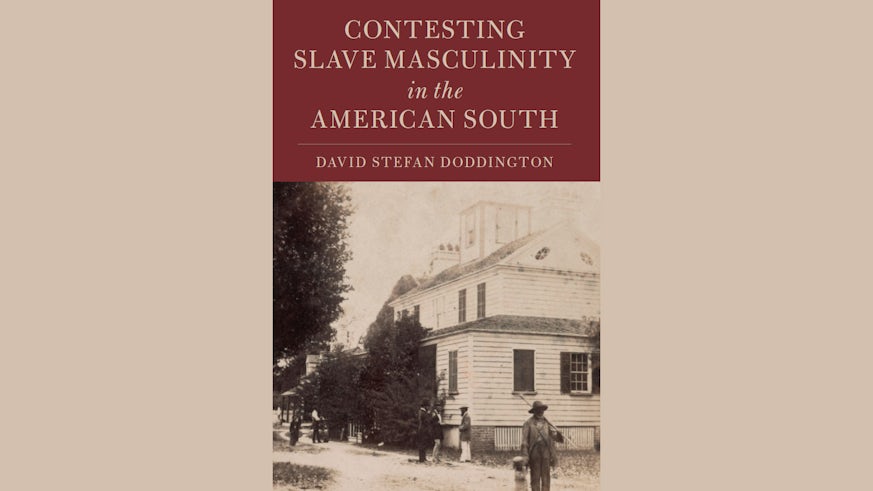Resistance, negotiation, survival: Just what did it mean to be a man and a slave in the American South?
13 July 2018

First book by Cardiff historian challenges ideas of united slave community to reset views of masculinity among enslaved men
Contesting Slave Masculinity in the American South by Dr David Doddington challenges historical models of slave solidarity and reveals how resistance, accommodation, and survival amidst oppression was shaped by gender, as well as how gendered values were embedded in the structures of enslavement.
Out this summer, the new book is intended for students and scholars of American history with an interest in slavery, gender, and race.
Focusing on work, authority, honour, sex, leisure and violence, the study is a full-length treatment of the idea of 'masculinity' in slave communities of the Old South. It examines the relational framework in which enslaved people crafted identities, finding a fluidity of gender at play. The reality of life in slave communities was far from a monolithic model of black solidarity.
Dr Doddington explains: “In establishing identities and forming relationships enslaved people could accept, resist, and refashion the ideals and influence of those who sought mastery over them. Similar tensions developed in conversation with families, friends, and the wider slave community. Enslaved people developed identities and attempted to survive the horrors of slavery through contest, resistance, and negotiation with enslavers, but also with one another.”
The institution of slavery became entrenched on the North American mainland during the seventeenth and eighteenth centuries, and the violent exploitation of Africans and African-Americans was a vital tool of European colonisation in the Americas. Slavery survived and even expanded following the American Revolution, acting as a permanent stain on a nation formed on the premise that “all men are created equal.” The rise of the “Cotton Kingdom” in the nineteenth century saw the dramatic expansion of slavery across the South, helping to spur on the economic development of the United States and the industrial revolution in Europe. Concerns over the South’s “Peculiar Institution” ultimately tore apart the United States with the brutal Civil War of 1861-1865 leading to the abolition of slavery and the emancipation of nearly four million formerly enslaved people.
The new book has already been well-received in the academic community:
‘This innovative book offers a bold challenge to the idea of a united slave community struggling against oppression. His argument, that enslaved men were perfectly capable of looking out for their own interests even to the detriment of other enslaved people, makes for a much more realistic portrait of the slave community as a result.' Tim Lockley, author of Welfare and Charity in the Antebellum South
'Doddington’s riveting portraits of rebels and resistors, conspirators and collaborators offer nuanced insight into American slavery, as well as refreshing intersectional analysis of race, gender and sexuality. This book provides a powerful portrait of a key era'. Catherine Clinton, author of Stepdaughters of History: Southern Women and the American Civil War
'What did it mean to be both a man and also a slave? In this deeply researched, powerful and compelling account of how enslaved men established masculine identity in work, in family and sex, in having authority over other slaves, and in various forms of violence, Doddington convincingly demonstrates just how fluid the idea and reality of notions of manhood were among enslaved peoples in antebellum America… This book provides fascinating new perspectives on just about every area of American slavery through a sophisticated gender analysis.' Trevor Burnard, author of Planters, Merchants, and Slaves: Plantation Societies in British America, 1650–1820
Lecturer in North American History, Dr David Doddington is interested in the study of slavery, race, and gender in the antebellum South, with a particular interest in examining resistance and solidarity within slave communities. He is currently working on his second book, an edited collection entitled Writing the History of Slavery (Bloomsbury) and the new projectOld Age and American Slavery funded by a Leverhulme Research Fellowship.
Contesting Slave Masculinity in the American South is published by Cambridge University Press.
